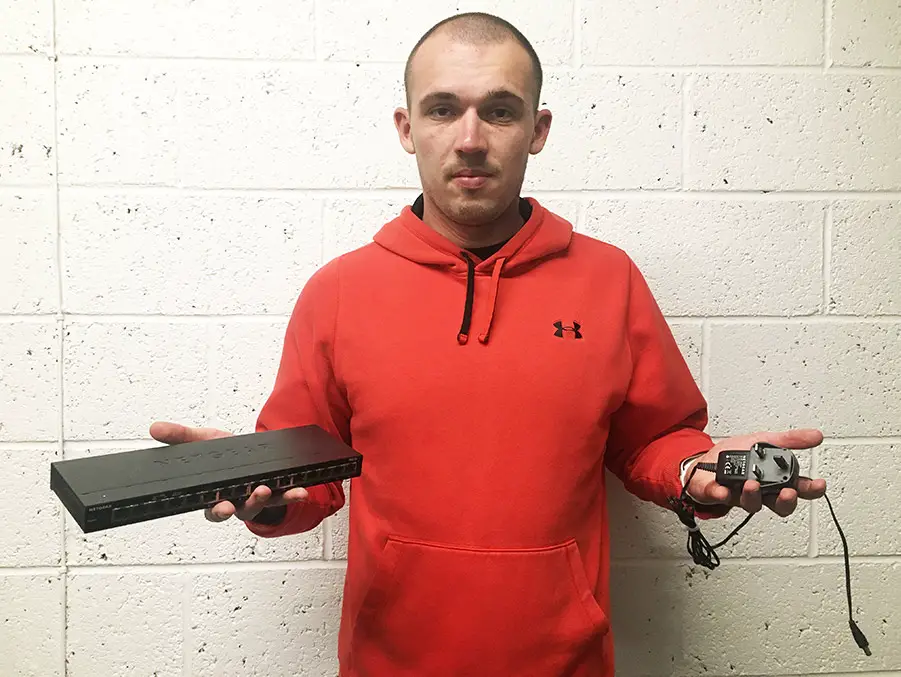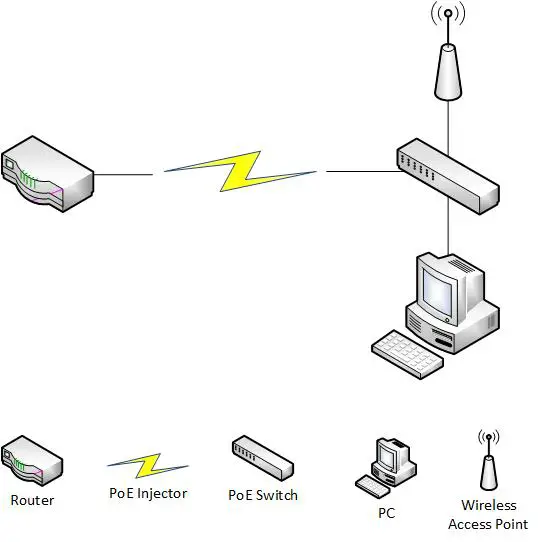Affiliate Disclosure: As an Amazon Associate I earn from qualifying purchases.
If you are looking to get your first network switch, you may be wondering whether there are any that don’t require power, especially when you might not have mains power near where you are looking to position it.
All network switches require power in order to function. Most will use AC power however some can be powered by USB or Power over Ethernet. This is useful where there isn’t a suitable power outlet located nearby.
If you don’t have mains power available or it is too inconvenient to get to, using Power over Ethernet is probably your best option. Just keep in mind that you may need a PoE injector to give your switch the power it needs.
Do Network Switches Require Power?
Network switches do need power to function, but there are alternatives to the usual AC power that most would typically use.
AC power is the most obvious solution when it comes to powering your switch. A power supply will already be included with it and so you just need to plug it into an available wall outlet and you’re away.
If you have an unmanaged switch, this is literally all you need to do to set it up. Give it power and then start plugging your devices into it using Ethernet cable.
Even with a managed switch that may require some additional setup, once you have given it power you can turn it on and begin the setup process.
The problem comes when you don’t have any power outlets near where you are planning on positioning your switch.
Most people don’t have enough power outlets as it is, let alone having them exactly where you need them.
So, what are your options if you want to use a network switch but don’t have a power outlet available to give it the power it needs?

What Is the Solution?
If you aren’t able to use the mains electricity supply to power your network switch, you still have a couple of options.
These are a USB powered network switch or making use of Power over Ethernet (PoE). Out of the two, I would highly recommend going down the PoE route rather than having to rely on a USB powered switch which simply won’t be good enough for a lot of people.
USB powered switches are typically not very powerful, and you are often limited to fewer Ethernet ports. Plus, you still need to find a USB port to act as a power supply.
It’s no good looking for a USB port on the faceplate of a mains power outlet, otherwise, you might as well just use the AC power that is available.
You also probably don’t want to be plugging it into the back of your PC when you will likely want to run an Ethernet cable into the back of the PC anyway. Not to mention that it will end up taking more space on your desk and some can be quite noisy when under heavy load.
Power over Ethernet is definitely the preferred solution here.
What Is Power over Ethernet?
Power over Ethernet is a process in which electrical power, along with data, is transferred over a single Ethernet cable.
This allows the single cable to provide both a data connection and power to PoE devices, such as security cameras, wireless access points, and you guessed it, PoE network switches.
The devices that can function using PoE are referred to as power sourcing equipment (PSE), powered devices (PDs), or sometimes both. The device responsible for transmitting the power is the PSE while the device being powered is the PD.
To get an understanding on how PoE works, let’s take a quick look at how an Ethernet cable itself works.
Within a standard cable, you will find 8 individual wires that are twisted together to form 4 pairs. Back in the day, when only 100 MB networks existed, only two of these pairs were used for data transfer. This left the other two pairs available for delivering power.
Given that most networks these days support speeds of up to 1000 MB, they inevitably have greater requirements and have to make use of all four pairs.
This, of course, doesn’t leave any left over for the AC current.
Power over Ethernet works by injecting a voltage of around 48 volts into the cable. This is a particularly low power output which keeps everything safe whilst also delivering enough power to your device to allow it to work efficiently.
Just like with wireless and other protocols, there are standards in which PoE must meet. The two most common ones are known as 802.3af and 802.3at.
802.3af is often referred to as PoE whereas 802.3at is known as PoE+.
The difference between the two is the amount of power that a device can use when be being powered by PoE.
802.3af can only consume up to 15.4 watts of power, whereas 802.3at offers almost double at 30 watts, making it a much more flexible standard when it comes to choosing which devices to connect.
The two most common PoE devices you’ll find within a home network are networked security cameras and wireless access points.
Both typically have greater power requirements which is why I would recommend using a PSE device that support at least the 802.3at standard.
Here is a table comparing the different PoE standards and the maximum amount of power connected devices can use.
| Standard | Type | Maximum Power per Device |
| 802.3af (PoE) | Type 1 | 15.4W |
| 802.3at (PoE+) | Type 2 | 30.8W |
| 802.3bt (UPoE) | Type 3 | 60W |
| 802.3bt | Type 4 | 90-95W |
PoE Switches and PoE Injectors
Ok, so you have decided you want to go down the route of using PoE to provide power to your network switch, but what exactly do you need to get everything set up?
The most important thing you need is a switch that is compatible and can actually be powered by PoE. I would recommend the Ubiquiti US-8 Unifi switch for most people, but if you need more ports, the Ubiquiti US-24 Unifi switch is the one to go for.
This switch has a port for receiving PoE in as well as a separate port for providing PoE to other devices like a security camera or wireless access point.
Running a regular Ethernet cable to the PoE switch still won’t be enough, though, so you have two options available.
The first, which I wouldn’t typically recommend, is to buy a second PoE switch that you are able to plug in and use the mains electricity to power it. This isn’t terribly convenient and would end up costing you more than the alternative option.
The other option is to use what is known as a PoE injector.
These work by making a non-PoE compatible switch work with PoE devices, including your PoE switch, over a single Ethernet cable.
They are easy to install whilst allowing you to expand your network and keep costs down through not having to buy additional switches or other networking hardware.
To use the PoE injector, simply connect an Ethernet cable from your router to the PoE injector, and then a second cable from the injector to your PoE switch.
PoE injectors do require AC power, so why use one of these when you could just plug your switch into the mains?
If you think about it, using a PoE injector gives you more flexibility around where you position everything. Yes, the injector will need to be close enough to reach a power outlet, but you could then run a longer Ethernet cable from the injector to wherever you want to place your switch.
Given that a single length of Ethernet cable can be up to 100m long, you can place your switch pretty much wherever you want in your home.
The take-home message is that it is much easier to run a longer Ethernet cable than it is to run a longer AC power supply.
Here is a diagram showing how your set up could look like once you have everything setup.

Final Thoughts
All network switches do require some form of power to operate, and whilst most people will use AC power, there are other options available.
USB powered network switches aren’t typically recommended given that you’ll be limited by the amount of power USB can provide, so often the switches are not very good and have a limited number of Ethernet ports.
Power over Ethernet is definitely the way to go if you don’t have a mains power outlet available for your switch. Just remember that you will need a PoE compatible switch and, more than likely, a PoE injector.
This will allow you to set up your switch pretty much wherever you want in your home and have it be powered by a single Ethernet cable.
If you found this article helpful, here are some others you may enjoy:
